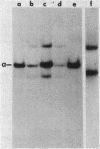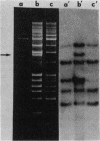Abstract
A procedure was developed for the prolonged growth of the ascomycete fungus Podospora anserina in liquid culture to determine the effects of such growth on the senescence phenotype. Senescence in P. anserina, which is maternally inherited and associated with the excision and amplification of specific mitochondrial plasmids, occurs when this species is grown on solid medium. In two independent experiments no evidence of senescence was observed as mycelia were serially passaged in liquid culture. Further, when separable mycelial masses, termed puff balls, from the liquid cultures were plated on solid medium, a significant increase in their average longevity was observed. The apparent immortality of P. anserina in liquid culture was not dependent upon mitochondrial DNA rearrangements, nor was it affected by the presence of a previously described senescence plasmid, alpha senDNA. Evidence was obtained indicating that growth in liquid culture exerts selective pressure to maintain the wild-type mitochondrial genome.
Full text
PDF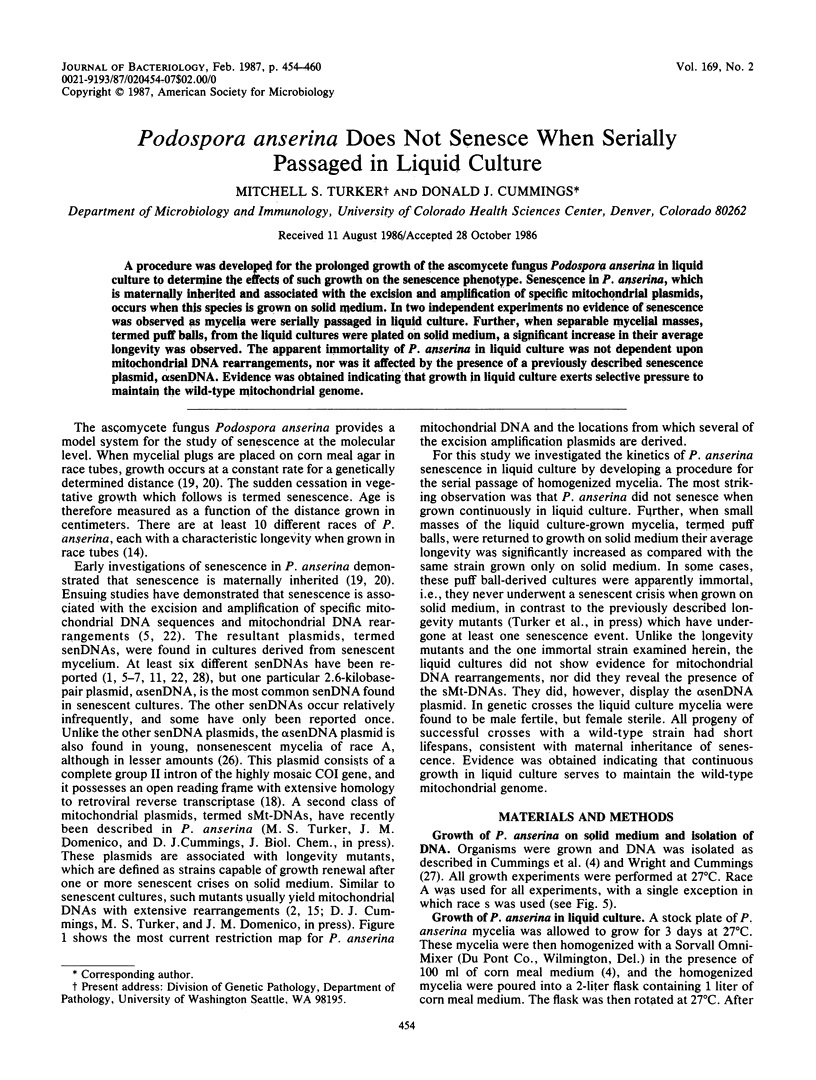
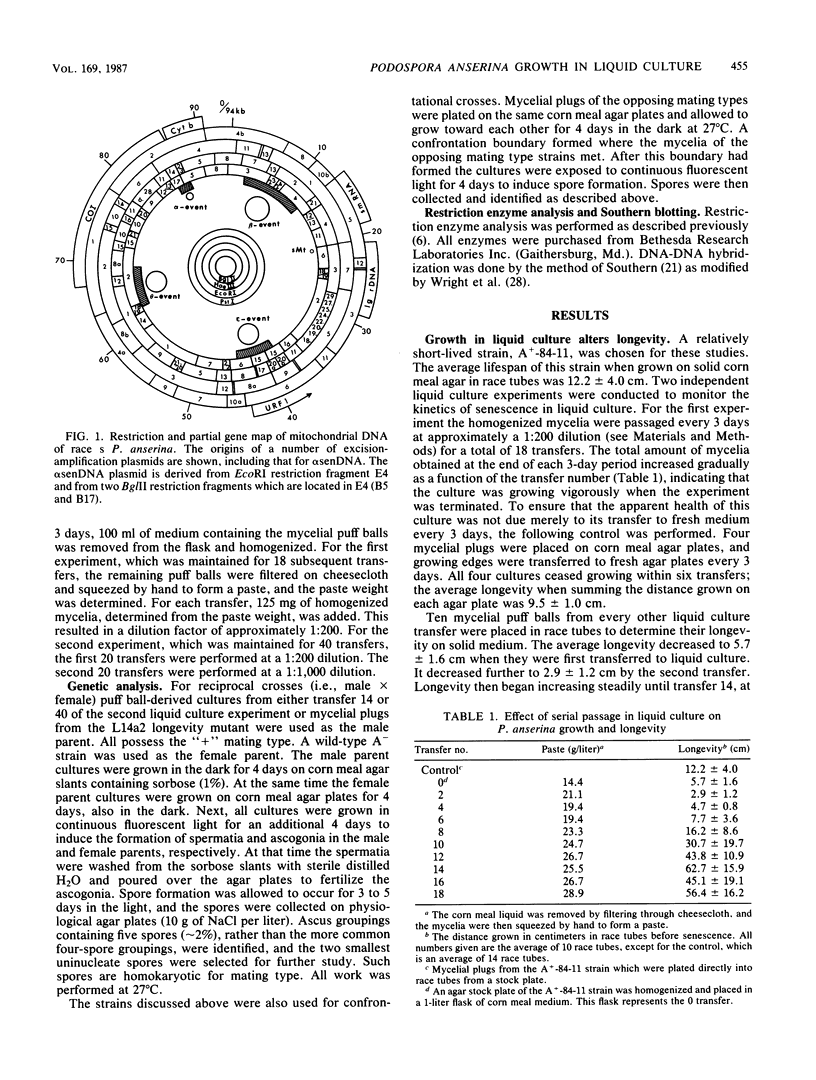
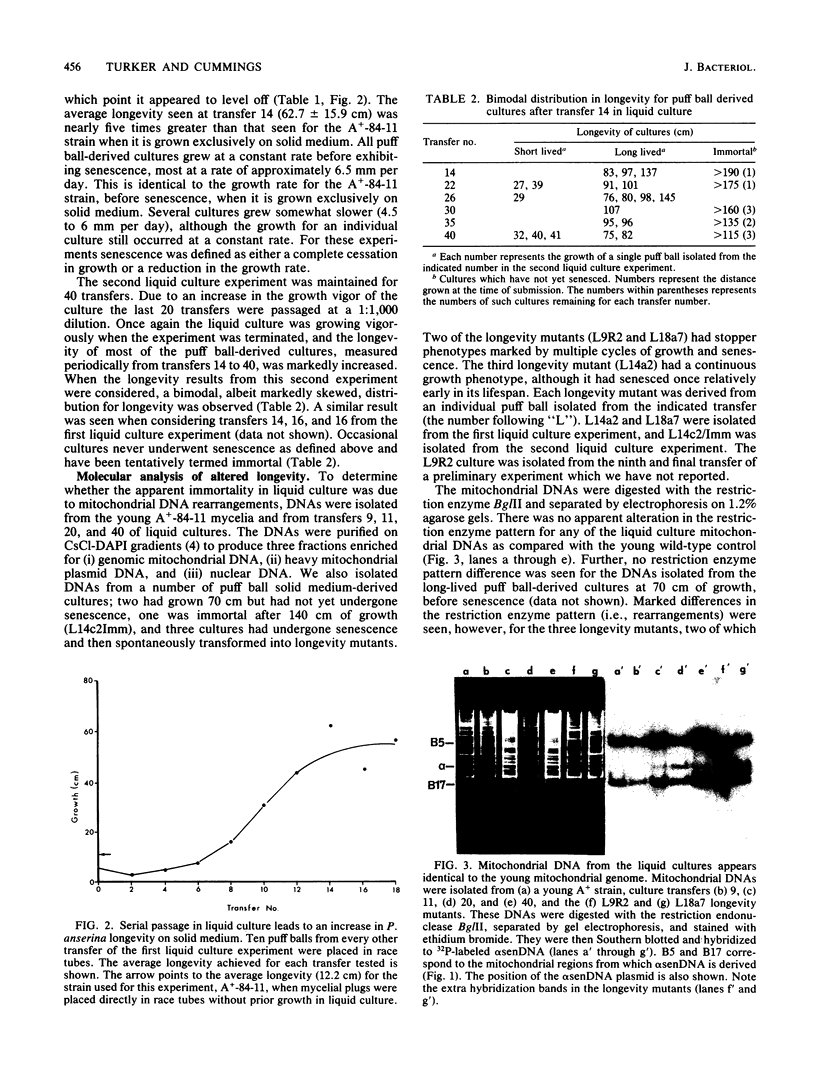
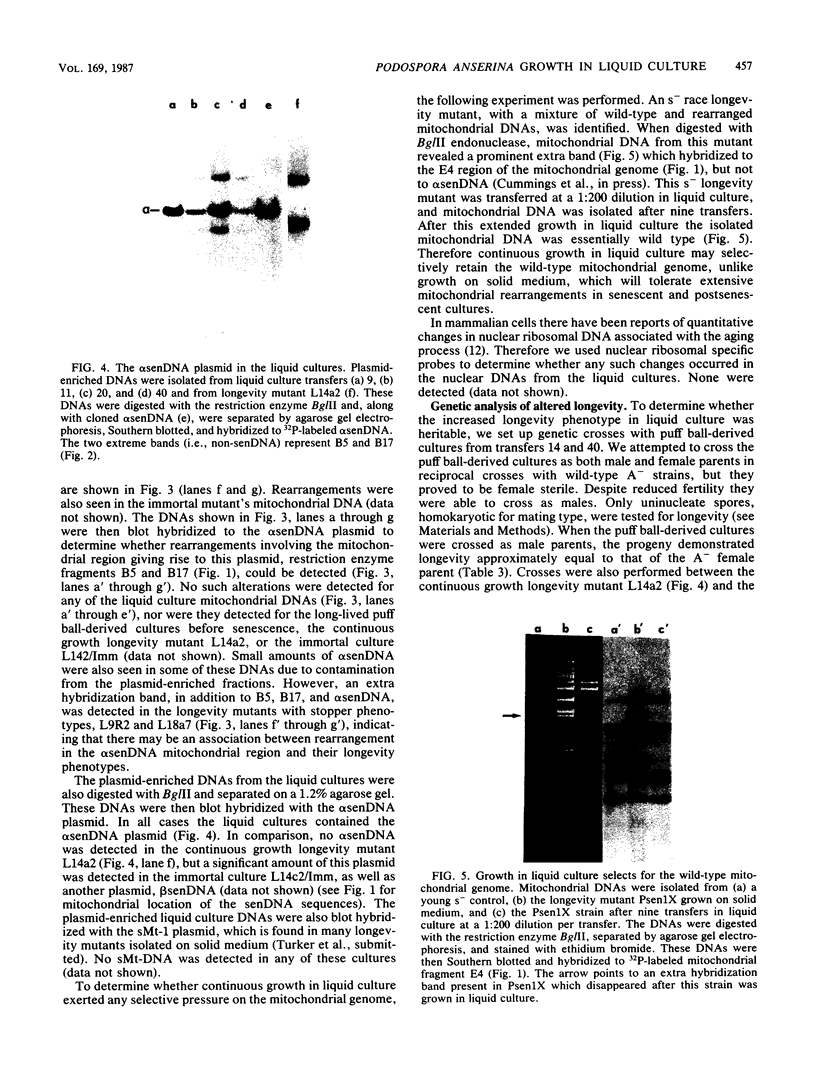
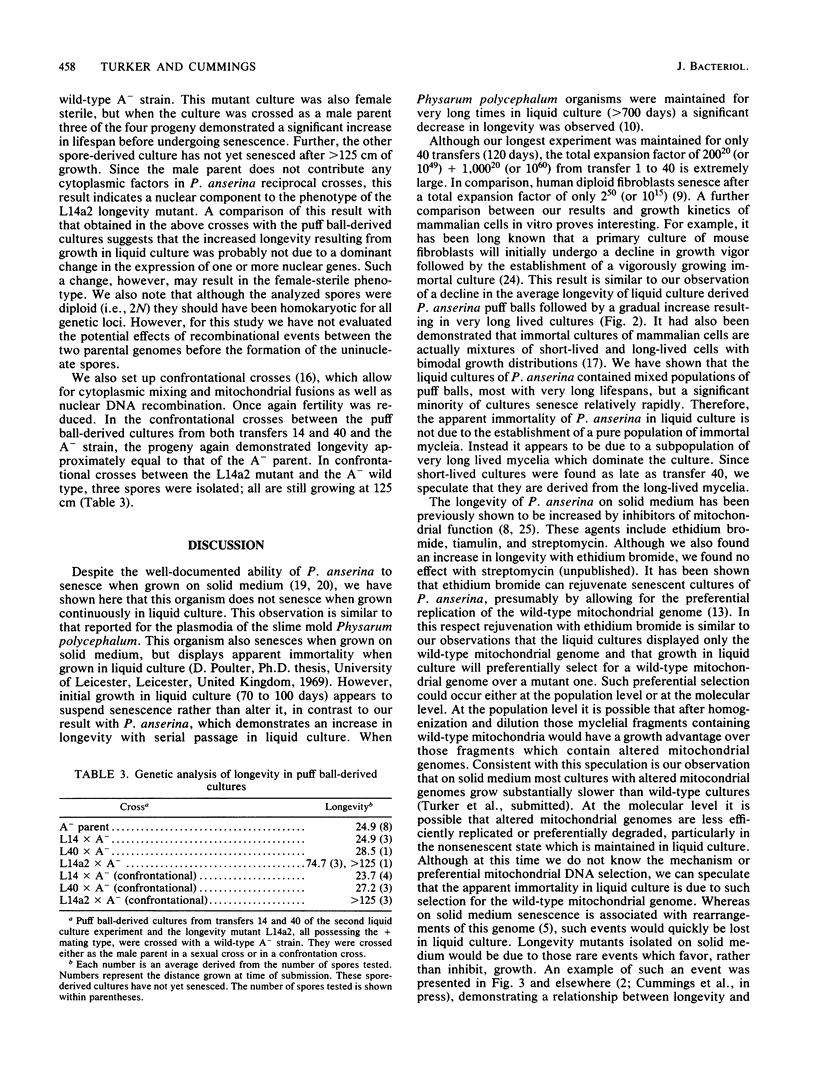
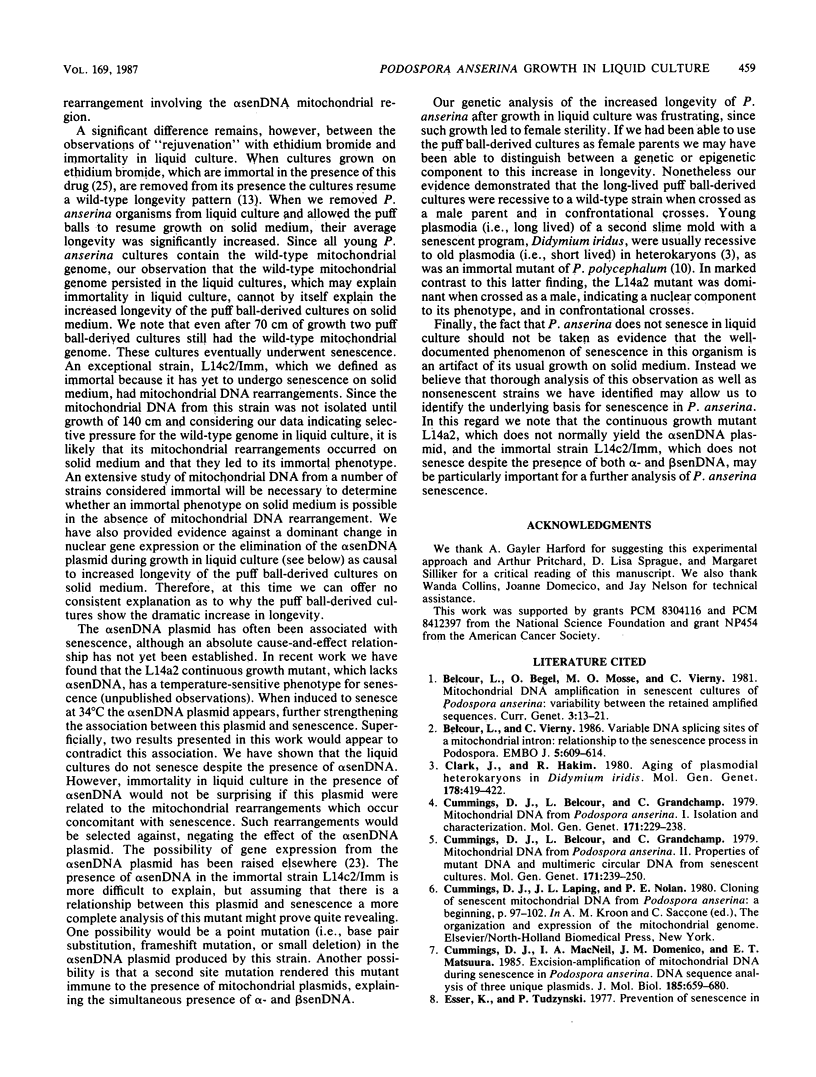
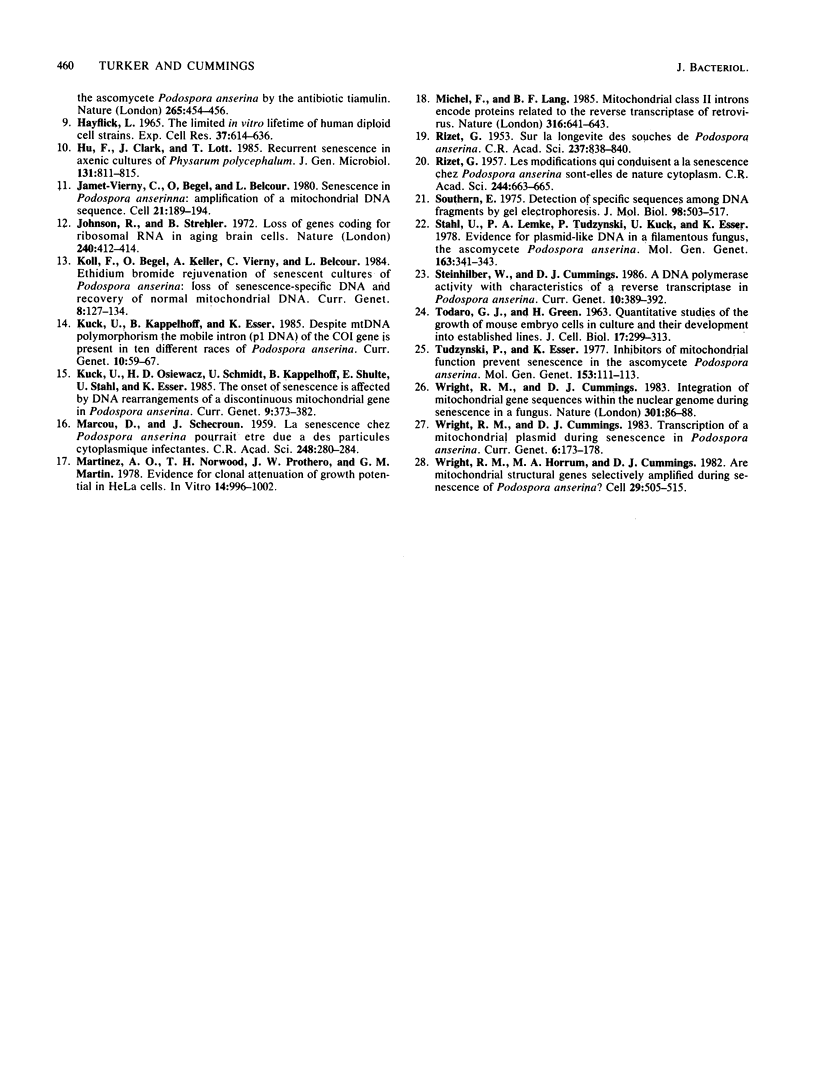
Images in this article
Selected References
These references are in PubMed. This may not be the complete list of references from this article.
- Belcour L., Vierny C. Variable DNA splicing sites of a mitochondrial intron: relationship to the senescence process in Podospora. EMBO J. 1986 Mar;5(3):609–614. doi: 10.1002/j.1460-2075.1986.tb04254.x. [DOI] [PMC free article] [PubMed] [Google Scholar]
- Cummings D. J., Belcour L., Grandchamp C. Mitochondrial DNA from Podospora anserina. I. Isolation and characterization. Mol Gen Genet. 1979 Mar 27;171(3):229–238. doi: 10.1007/BF00267577. [DOI] [PubMed] [Google Scholar]
- Cummings D. J., Belcour L., Grandchamp C. Mitochondrial DNA from Podospora anserina. II. Properties of mutant DNA and multimeric circular DNA from senescent cultures. Mol Gen Genet. 1979 Mar 27;171(3):239–250. doi: 10.1007/BF00267578. [DOI] [PubMed] [Google Scholar]
- Cummings D. J., MacNeil I. A., Domenico J., Matsuura E. T. Excision-amplification of mitochondrial DNA during senescence in Podospora anserina. DNA sequence analysis of three unique "plasmids". J Mol Biol. 1985 Oct 20;185(4):659–680. doi: 10.1016/0022-2836(85)90052-x. [DOI] [PubMed] [Google Scholar]
- Esser K., Tudzynski P. Prevention of senescence in the ascomycete Podospora anserina by the antibiotic tiamulin. Nature. 1977 Feb 3;265(5593):454–456. doi: 10.1038/265454a0. [DOI] [PubMed] [Google Scholar]
- HAYFLICK L. THE LIMITED IN VITRO LIFETIME OF HUMAN DIPLOID CELL STRAINS. Exp Cell Res. 1965 Mar;37:614–636. doi: 10.1016/0014-4827(65)90211-9. [DOI] [PubMed] [Google Scholar]
- Hu F. S., Clark J., Lott T. Recurrent senescence in axenic cultures of Physarum polycephalum. J Gen Microbiol. 1985 Apr;131(4):811–815. doi: 10.1099/00221287-131-4-811. [DOI] [PubMed] [Google Scholar]
- Jamet-Vierny C., Begel O., Belcour L. Senescence in Podospora anserina: amplification of a mitochondrial DNA sequence. Cell. 1980 Aug;21(1):189–194. doi: 10.1016/0092-8674(80)90126-9. [DOI] [PubMed] [Google Scholar]
- Johnson R., Strehler B. L. Loss of genes coding for ribosomal RNA in ageing brain cells. Nature. 1972 Dec 15;240(5381):412–414. doi: 10.1038/240412a0. [DOI] [PubMed] [Google Scholar]
- Kück U., Osiewacz H. D., Schmidt U., Kappelhoff B., Schulte E., Stahl U., Esser K. The onset of senescence is affected by DNA rearrangements of a discontinuous mitochondrial gene in Podospora anserina. Curr Genet. 1985;9(5):373–382. doi: 10.1007/BF00421608. [DOI] [PubMed] [Google Scholar]
- Martinez A. O., Norwood T. H., Prothero J. W., Martin G. M. Evidence for clonal attenuation of growth potential in HeLa cells. In Vitro. 1978 Dec;14(12):996–1002. doi: 10.1007/BF02616213. [DOI] [PubMed] [Google Scholar]
- Michel F., Lang B. F. Mitochondrial class II introns encode proteins related to the reverse transcriptases of retroviruses. Nature. 1985 Aug 15;316(6029):641–643. doi: 10.1038/316641a0. [DOI] [PubMed] [Google Scholar]
- RIZET G. Les modifications qui conduisent à la sénescence chez Podosproa sontelles de nature cytoplasmique? C R Hebd Seances Acad Sci. 1957 Jan 28;244(5):663–665. [PubMed] [Google Scholar]
- Southern E. M. Detection of specific sequences among DNA fragments separated by gel electrophoresis. J Mol Biol. 1975 Nov 5;98(3):503–517. doi: 10.1016/s0022-2836(75)80083-0. [DOI] [PubMed] [Google Scholar]
- Stahl U., Lemke P. A., Tudzynski P., Kück U., Esser K. Evidence for plasmid like DNA in a filamentous fungus, the ascomycete Podospora anserina. Mol Gen Genet. 1978 Jul 4;162(3):341–343. doi: 10.1007/BF00268860. [DOI] [PubMed] [Google Scholar]
- Steinhilber W., Cummings D. J. A DNA polymerase activity with characteristics of a reverse transcriptase in Podospora anserina. Curr Genet. 1986;10(5):389–392. doi: 10.1007/BF00418411. [DOI] [PubMed] [Google Scholar]
- TODARO G. J., GREEN H. Quantitative studies of the growth of mouse embryo cells in culture and their development into established lines. J Cell Biol. 1963 May;17:299–313. doi: 10.1083/jcb.17.2.299. [DOI] [PMC free article] [PubMed] [Google Scholar]
- Tudzynski P., Esser K. Inhibitors of mitochondrial function prevent senescence in the ascomycete Podosprora anserina. Mol Gen Genet. 1977 May 20;153(1):111–113. doi: 10.1007/BF01036003. [DOI] [PubMed] [Google Scholar]
- Wright R. M., Cummings D. J. Integration of mitochondrial gene sequences within the nuclear genome during senescence in a fungus. Nature. 1983 Mar 3;302(5903):86–88. doi: 10.1038/302086a0. [DOI] [PubMed] [Google Scholar]
- Wright R. M., Horrum M. A., Cummings D. J. Are mitochondrial structural genes selectively amplified during senescence in Podospora anserina? Cell. 1982 Jun;29(2):505–515. doi: 10.1016/0092-8674(82)90167-2. [DOI] [PubMed] [Google Scholar]




